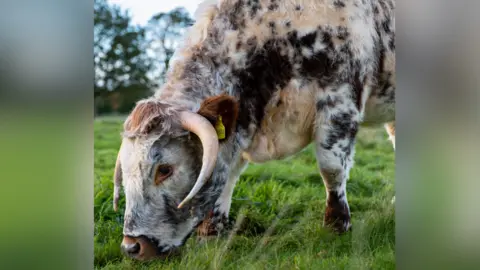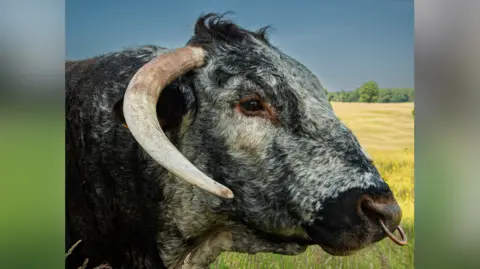Cattle welcomed to castle in conservation project
 National Trust/Sam Milling
National Trust/Sam MillingFour longhorn cattle have been welcomed to a castle in Kent as part of a conservation project.
Longhorn Lance has taken up residence at Scotney Castle, near Tunbridge Wells, alongside three Sussex-longhorn crossbred cattle.
Richard Newman, lead ranger at the castle, said the new additions were key to "ensuring Scotney remains a haven for biodiversity".
"Lance and his companions are not just a beautiful addition to Scotney Castle, they are key players in our conservation work," he said.
"By carefully managing their grazing, we can create a thriving environment for native plants, insects, and other wildlife."
The conservation project is led by the National Trust and Kent Wildlife Trust.
 National Trust/Sam Milling
National Trust/Sam MillingLonghorns are known for their gentle grazing, while the Sussex-longhorn crossbreeds benefit from robust health and adaptability.
The new additions will further contribute to the estate's ecological balance, promoting healthier soils and richer habitats, Mr Newman said.
Scotney Castle has a history of cattle grazing, with archives showing that the first Scotney herd was introduced in 1896.
The animals worked the land until 1970, when they were sold following the death of Christopher Hussey, who took ownership of the estate in 1952.
Follow BBC Kent on Facebook, on X, and on Instagram. Send your story ideas to [email protected] or WhatsApp us on 08081 002250.
